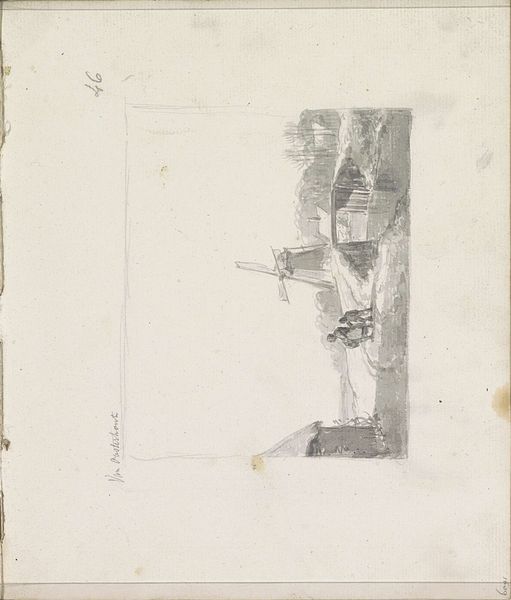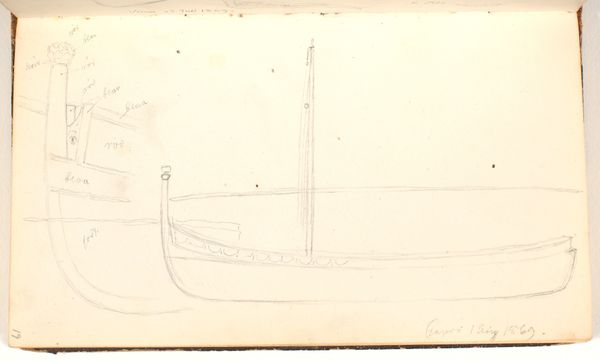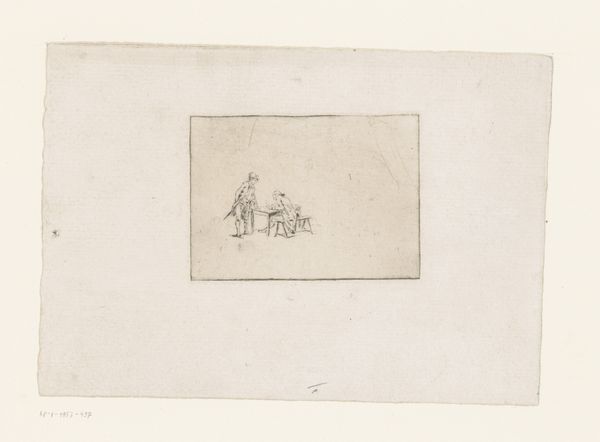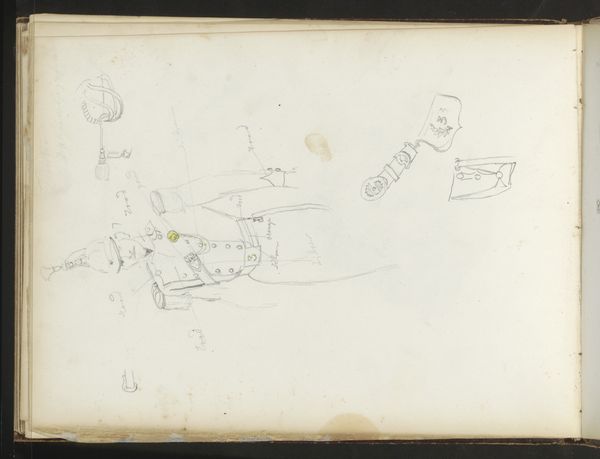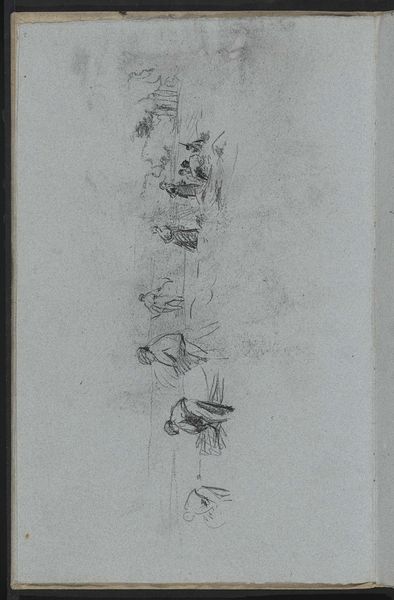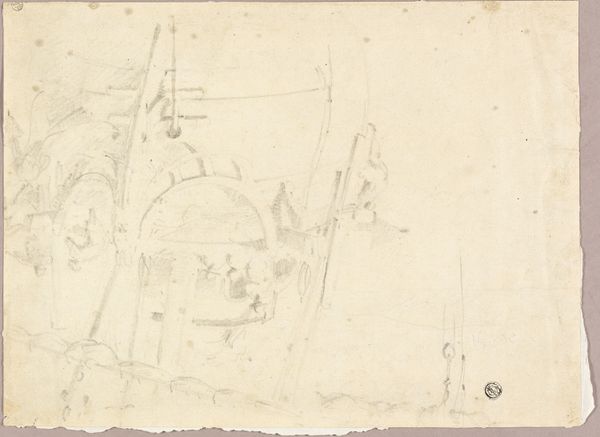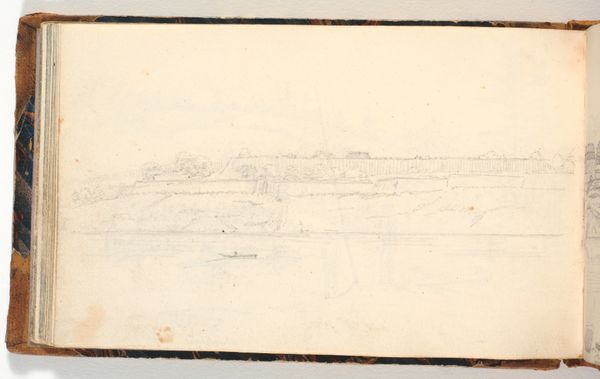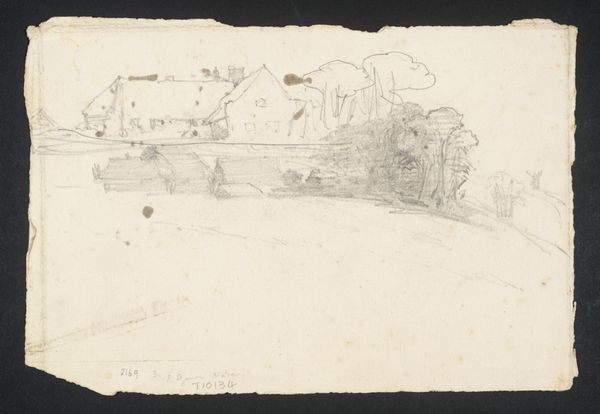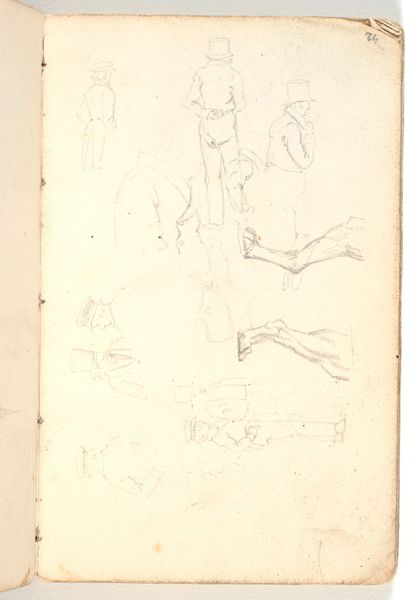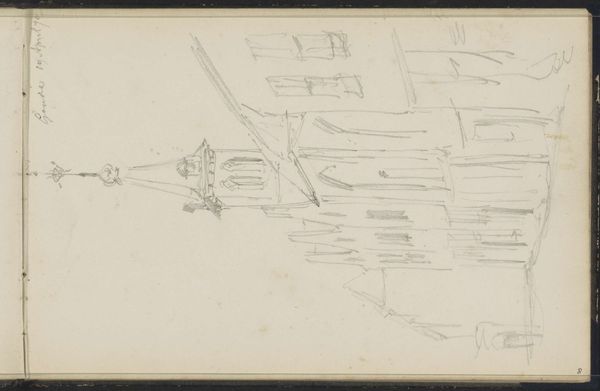
Liggende kvinde i klassisk dragt med et hjul. I baggrunden en fæstninglignende bygning 1765 - 1833
0:00
0:00
drawing
#
drawing
#
landscape
#
figuration
#
romanticism
Dimensions: 114 mm (height) x 175 mm (width) (bladmaal)
Curator: What a captivating drawing! This is Gerhard Ludvig Lahde's, "Liggende kvinde i klassisk dragt med et hjul. I baggrunden en fæstninglignende bygning," dating roughly from 1765 to 1833. It resides here at the SMK. The piece employs very spare drawing strokes to evoke a classicizing image in a landscape. Editor: My first impression is of stillness and subtle tension. The monochrome palette makes the piece seem quite restrained, yet there's something unsettling about the positioning of the figure next to the wheel. Curator: Interesting. Lahde worked during a period heavily influenced by Romanticism. I see this drawing not just as an aesthetic object, but as a product of his specific socio-economic context. The rise of nationalism and the burgeoning interest in classical antiquity undoubtedly impacted his choice of subject matter and style. This very drawing embodies those historical forces at play! Editor: I would argue that one can look at the piece divorced from the artist’s historical positioning and still draw powerful connections between forms, shapes, and tonal variety of the line work. Curator: I am most taken by the materiality of this drawing – it’s a reminder that art is not merely conceptual, but results from very physical labor. Editor: The drawing strikes me because the artist renders light so expertly, conveying so much meaning. Even just considering formal composition we could talk endlessly. Consider how the placement of the woman’s wheel directs our eyes toward the fortress on the horizon. Curator: The fortress possibly refers to Denmark's military infrastructure, which served as a site of labor and national identity formation. It’s more than just aesthetic. It reveals an insight to military architecture that helped structure early Danish modernity! Editor: While the historical aspects are indeed thought-provoking, this piece demonstrates how through careful manipulation of light, line, and form, the artist created something resonant, regardless of time. Curator: I can understand how one might feel moved, purely from a material and visual point of view, but without delving into context we are missing an important point about artistic production as part of a wider, ever-evolving process. Editor: Fair enough. Regardless, one can observe, dissect, and interpret. Both ways!
Comments
No comments
Be the first to comment and join the conversation on the ultimate creative platform.


